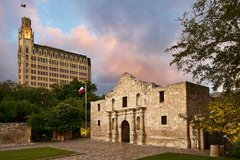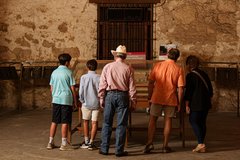The nation had been changing, too. The United States at the time was younger that the Alamo. Great events had transformed the U.S. from thirteen landlocked colonies along the eastern seaboard into a continental power that stretched from the Atlantic to the Pacific. The nation was on the verge of becoming a world power. Americans were proud of their history and those who made it. As they looked around, though, the noticed that historic sites were being lost in the push for progress. Moreover, many of the men and women who played important roles as frontiersmen, pioneers, and soldiers — those deemed responsible for settling the country — were being lost as well. Many veterans of the nation’s conflicts had already passed from the scene. The young men who had faced off against one another during the Civil War were now senior citizens. The question arose as what could be done, both to preserve the memory of and to honor the past.
Two movements emerged that offered a solution. One was the formation of descendant association. The sons and daughters of veterans’ groups took over the mission of promoting the memory of their ancestors. For example, this period saw the creation of the National Association of Veterans of the Mexican War (1874), Sons of Union Veterans of the Civil (1881), Daughters of the American Revolution (1890), United Daughters of the Confederacy (1894), Sons of Confederate Veterans (1896), Dames of 1846 (1901).
Texas was no exception to this desire to preserve and honor the past. Men who had served in the Texas Revolution organized the Texas Veteran Association (1873). Another Texas organization, the Daughters of the Texas Republic, was founded in 1891.
Many residents and visitors to San Antonio were becoming increasingly concerned about the fate of its most important and iconic historical site — the Alamo. Would it, too, be lost in the rush to modernize the city?
Although the State of Texas had already purchased the Alamo’s church building in 1883 as a memorial for the Texans who died in the famous 1836 battle, critics claimed that commercial encroachment on the plaza created a carnival-like atmosphere unsuited for a shrine. Billboards and handbills covered the outer walls of the Alamo’s convent, or Long Barrack. Privately owned by the families of merchants Hugo, Schmeltzer and Heuermann, the building’s future was uncertain.


